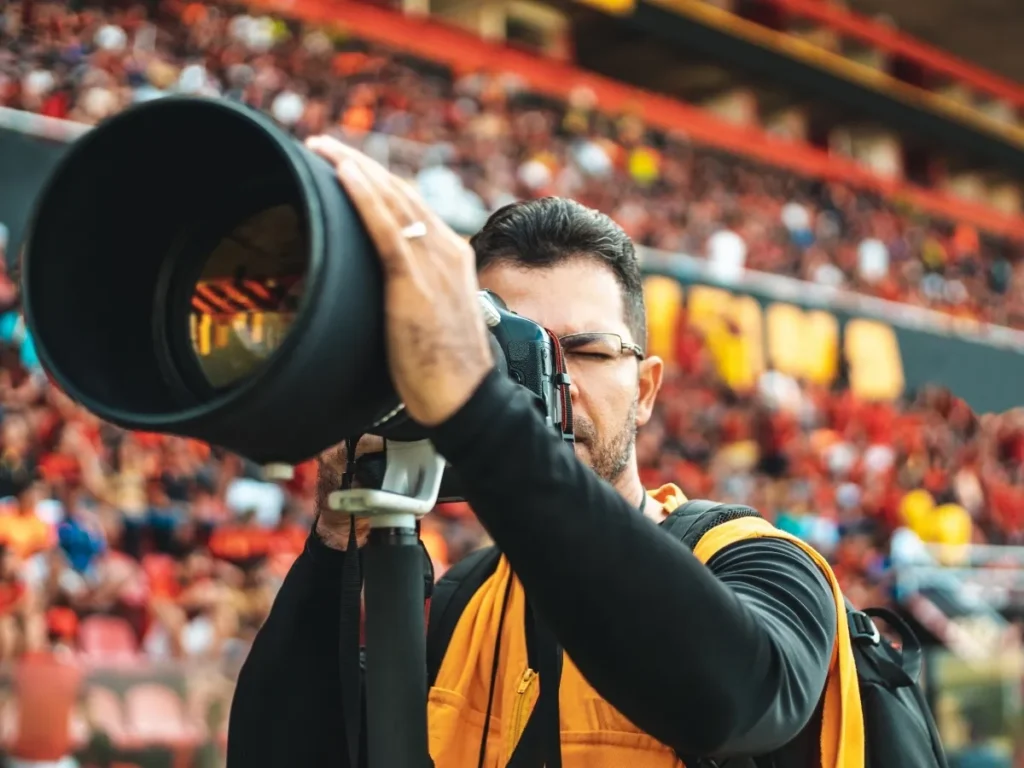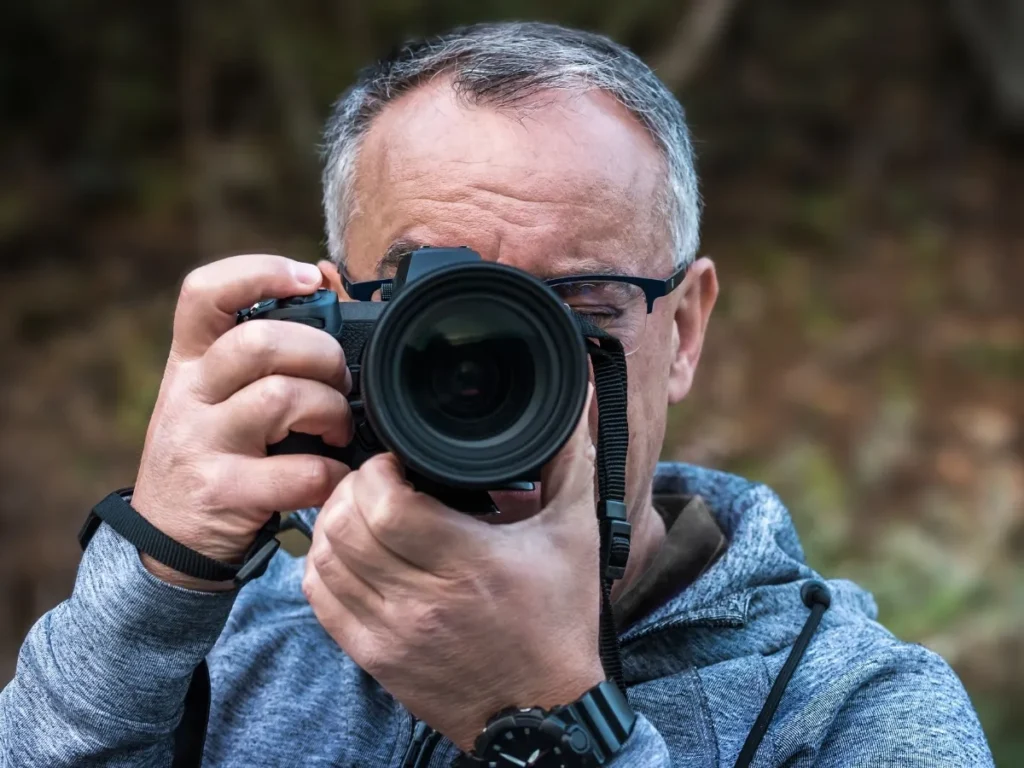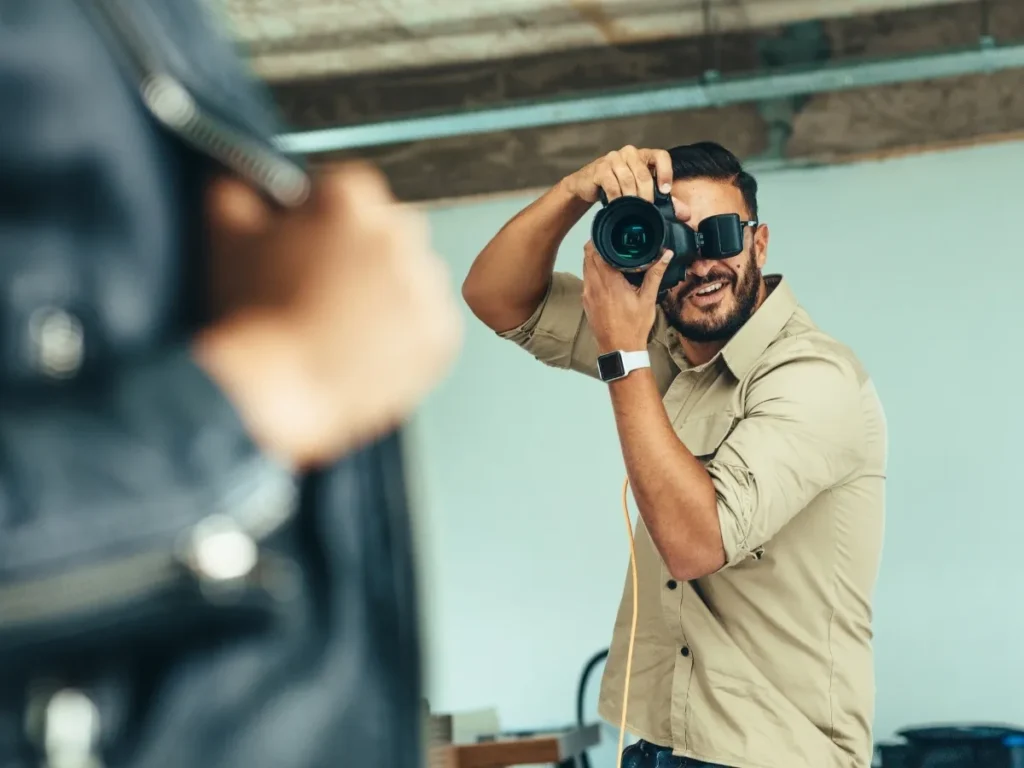Motion Photography/sports photography lenses are more than just freezing action—it’s about telling a story through speed, style, and soul. Whether it’s the explosive sprint of an athlete or the quiet intensity of a dancer mid-leap, Motion Photography captures raw, fleeting moments that reveal genuine emotion.
In the world of sports and movement, every frame holds tension, triumph, or transformation. With Motion Photography, photographers dive deep into the rhythm of motion—balancing technical precision with artistic instinct. Shutter speed, angle, and light become tools not only for clarity, but for emotion.
To master Motion Photography, you must feel the moment as much as see it. It’s not just about capturing fast action—it’s about sensing the anticipation before it happens and framing the energy in a way that tells a human story. Whether it’s on the field, court, or stage, Motion Photography invites us into the heartbeat of motion—where emotion and momentum collide in a single, unforgettable frame.
Why Motion Photography Captures More Than Just Movement
Camera Settings for Stunning Sports Photography Lenses
Canon R7 + 24–105mm Lens For Sports And Portraits
Here is a custom setup guide for the Canon EOS R7 paired with the 24–105mm lens, optimized for sports and portrait photography. The R7’s high-speed burst, advanced autofocus, and APS‑C sensor (with 1.6x crop) make it a strong hybrid for both action and people shots.
⚙️ Canon R7 + 24–105mm Lens Setup Guide
📷 General Setup (for both genres)
| Setting | Value / Recommendation |
|---|---|
| Drive Mode | High-Speed Continuous+ (electronic shutter for sports) |
| Autofocus Mode | Servo AF (tracking) for sports One-Shot AF for portraits |
| AF Method | Face + Eye Detection with Tracking |
| Metering | Evaluative |
| Image Quality | RAW or RAW + JPEG (for editing flexibility) |
| Image Stabilization | Enabled (in-lens + in-body IS) |
| Custom Mode | Assign C1 for Sports and C2 for Portraits |
🏃 Sports Photography Setup (Canon R7 + 24–105mm)
✅ Recommended Settings:
| Parameter | Value |
|---|---|
| Shooting Mode | Shutter Priority (Tv) |
| Shutter Speed | 1/1000s – 1/2000s |
| ISO | Auto, with max ISO set to 3200 |
| Aperture | f/4 (wide open) |
| Focal Length | 70–105mm for subject isolation |
| White Balance | Auto or Daylight |
| AF Tracking Sensitivity | +1 to +2 (to keep tracking fast-moving subjects) |
| Burst Mode | Electronic shutter – up to 30 fps (silent + fast) |
| Lens IS | Enabled (unless on tripod or monopod) |
🎯 Tips for Sports:
- Pre-focus on the zone where action will occur.
- Use Back-Button AF for more control over focusing.
- Use C1 mode with all the above pre-saved for quick recall.
👤 Portrait Photography Setup (Canon R7 + 24–105mm)
✅ Recommended Settings:
| Parameter | Value |
|---|---|
| Shooting Mode | Aperture Priority (Av) |
| Aperture | f/4–f/5.6 for natural background blur |
| Shutter Speed | 1/160s – 1/250s |
| ISO | 100–400 |
| Focal Length | 85–105mm for compression and flattering facial proportions |
| White Balance | Auto, or use Kelvin (5200–5600K) for skin tone control |
| Eye Detection AF | ON |
| AF Area | Face + Eye Tracking (One-Shot AF) |
| Picture Style | Portrait (soft skin tones) or Neutral for color grading |
🎯 Tips for Portraits:
- Use natural light from windows or golden hour for the best effect.
- Step back and zoom to 105mm for pleasing compression.
- Use C2 mode to access your portrait profile instantly.
🎛️ Custom Button Suggestions (R7)
| Button / Dial | Custom Function |
|---|---|
| AF-ON | Back-button focus (especially for sports) |
| M-Fn Button | Switch between AF modes (Face ↔ Zone ↔ Spot) |
| Lens Control Ring | ISO or Aperture, depending on mode |
| Quick Menu (Q) | Enable frequently used settings (Drive, WB, etc) |
🎒 Bonus Accessories to Maximize Output
| Item | Use Case |
|---|---|
| EF–RF adapter | To use EF 24–105mm f/4L IS USM on R7 |
| ND Filter | Shoot wide open in daylight (especially f/4) |
| External flash (Speedlite) | Portrait lighting indoors or fill flash |
| Monopod | Stability for sports (without loss of mobility) |
📌 Final Notes
- The Canon R7’s crop factor makes the 24–105mm effectively 38–168mm, giving more reach for sports and even tighter portrait framing.
- For maximum quality, shoot in RAW and post-process skin tones, contrast, and sharpness in Lightroom or DxO.
- Save these setups as Custom Shooting Modes on the mode dial (C1 = sports, C2 = portrait) for rapid switching.
What Is Motion Photography? Techniques, Gear, and Creative Examples
Using the Canon 18–150mm lens—especially with a camera like the Canon EOS R7—can deliver excellent results for sports and portrait photography when used to its strengths. While it’s a versatile all-in-one lens, some specific techniques and settings can help you maximize image quality, subject isolation, and sharpness.
🔍 Understanding the 18–150mm Lens
| Feature | Benefit for You |
|---|---|
| Zoom Range | 29–240mm (35mm eq. on APS-C: 1.6× crop) – from wide to long telephoto |
| Variable Aperture | f/3.5–6.3 — sharp, but not great in low light |
| STM Motor | Smooth, quiet autofocus (good for video + portraits) |
| Compact & Light | Ideal for handheld sports shooting and flexibility |
🏃 Optimal Use for Sports Photography
✅ Recommended Camera Settings (Canon R7 + 18–150mm)
| Setting | Recommended Value |
|---|---|
| Shooting Mode | Shutter Priority (Tv) or Manual |
| Shutter Speed | 1/1000 – 1/2000 sec |
| Aperture | Wide open (f/5.6–f/6.3 depending on zoom) |
| ISO | Auto (max 3200) or manually 400–1600, depending on light |
| Focal Length | 100–150mm (for tight subject tracking) |
| AF Mode | Servo AF + Eye Detection |
| Burst Mode | High-Speed Continuous + Electronic Shutter (30 fps) |
| Image Stabilization | Enabled (lens IS + IBIS combo on R7) |
🧠 Pro Tips for Sports:
Pre-focus on the action zone (e.g., goal, finish line).
Use Back Button Focus (AF-ON) for consistent tracking.
At 150mm, keep your shutter at 1/1250s or faster to avoid blur.
Compose tighter for stronger action shots, but keep moving subjects in the frame.
👤 Optimal Use for Portrait Photography
✅ Recommended Camera Settings
| Setting | Recommended Value |
|---|---|
| Shooting Mode | Aperture Priority (Av) |
| Aperture | f/5.6–f/6.3 (use the widest possible for bokeh) |
| Focal Length | 85–150mm for subject compression and flattering look |
| Shutter Speed | 1/160 – 1/250 sec |
| ISO | 100–400 (raise if in shade or indoors) |
| AF Method | One-Shot AF + Face + Eye Detection |
| Picture Style | Portrait or Neutral (for editing flexibility) |
🧠 Pro Tips for Portraits:
Use 135–150mm to get a smooth background blur even at f/6.3.
Find soft side light (golden hour or window light).
Step back and zoom in to compress the background and minimize distortion.
Avoid busy backgrounds unless using a wide aperture to blur them.
🎨 Composition Techniques
| Technique | Why It Works |
|---|---|
| Rule of Thirds | Keeps the subject dynamic and visually balanced |
| Foreground Blur | Adds depth, especially effective at 100–150mm |
| Compression | At 150mm, backgrounds appear closer and smoother |
| Framing | Use arches, windows, or players for visual interest |
⚙️ Limitations and How to Overcome Them
| Limitation | Solution |
|---|---|
| Narrow max aperture at 150mm | Shoot in good light or raise ISO carefully |
| Less bokeh than a f/2.8 lens | Max out zoom, step back, and keep the background distant |
| Slower autofocus than L-lens | Use tracking + eye detection + anticipate movement |
| Soft corners at the wide end | Avoid 18mm for critical portraits—use 24mm+ if possible |
🔄 Custom Button & Quick Settings on Canon R7
| Button | Suggested Custom Function |
|---|---|
| AF-ON | Back-Button Focus |
| M-Fn | Toggle between Face Tracking / Spot AF |
| Control Ring | ISO or Aperture |
| Q Button | Access AF area, Picture Style, Metering quickly |
📌 Summary: Get the Most from the 18–150mm Lens
✅ Use 135–150mm for both tight portraits and sports detail
✅ Keep shutter speed above 1/1000s for action
✅ Leverage Face + Eye Detection to maintain sharp focus
✅ Use Av for portraits, Tv for sports — or save as Custom Modes
✅ Don’t be afraid to raise ISO; Canon R7 handles it well
✅ Learn to shoot wide open (f/6.3 at long end) and frame creatively for depth
Canon 18‑150 mm vs Canon 24‑105 mm
| Feature / Use Case | Canon 18‑150 mm (RF‑S 18‑150mm f/3.5‑6.3 IS STM) | Canon 24‑105 mm (f/4 L / typical 24‑105 zoom) |
|---|---|---|
| Intended System / Mount | Designed for Canon APS‑C “R” cameras (RF‑S mount) | Used in full-frame and crop systems (e.g. RF 24‑105mm, EF 24‑105mm) |
| Focal Length / Effective Reach | 18–150 mm → on APS‑C corresponds approx 29–240 mm equivalent :contentReference[oaicite:2]{index=2} | 24–105 mm → less reach on tele end than 150 mm; more “standard” zoom range |
| Maximum Aperture / Light Gathering | Variable: f/3.5 at wide → f/6.3 at tele end | Constant f/4 (in many professional 24‑105mm lenses) :contentReference[oaicite:5]{index=5} |
| Image Stabilization / Shake Compensation | Has in‑lens IS (≈ 4.5 stops) :contentReference[oaicite:6]{index=6}; when paired with body IBIS, further gains possible | Many 24‑105 lenses also include optical IS. For example, RF 24‑105mm f/4 L has strong image stabilization and is praised for sharpness and contrast |
| Autofocus / Focus Speed & Accuracy | Uses STM (stepping motor) type; relatively quiet and smooth, good for video & general use but not ultra-fast as some top-tier lenses | Professional 24‑105 L lenses use USM / Nano USM designs which are faster, more responsive in demanding conditions :contentReference[oaicite:10]{index=10} |
| Weight & Portability | Lightweight: ~310 g | Heavier (L‑series / professional build) and bulkier |
| Sharpness, Optical Quality & Distortion | Good for general use; some softness, especially at extreme zoom ends; acceptable for many everyday uses :contentReference[oaicite:13]{index=13} | Generally better controlled optical quality across the zoom range; high sharpness, better contrast, less distortion in many cases |
| Pros for Sports Photography |
• Superior reach (150 mm) gives better tele range compared to 105 mm • Lightweight and easy to carry during movement • Versatility across wide to tele makes it easier to adapt in dynamic scenarios • IS + body stabilization helps with handheld shooting in less ideal light |
• Faster f/4 constant aperture is more reliable for motion capture • Better autofocus under challenging conditions • Superior sharpness and contrast help with subject isolation • More robust construction for tougher use |
| Cons for Sports Photography |
• At long end (f/6.3) light gathering is weak → need higher ISO or faster shutter • Autofocus may lag in very fast action vs premium lenses • Optical compromises / softness at extremes may hurt critical detail • Variable aperture complicates exposure in fast action |
• Tele limit of 105 mm may be insufficient for distant action or large fields :contentReference[oaicite:15]{index=15} • Bulkier gear less agile when moving quickly • f/4 may struggle in low light compared to brighter primes |
| Pros for Portrait Photography |
• Flexibility: can zoom from environmental (wide) to tight portraits • Lightweight nature allows comfortable handheld shooting • IS helps in less ideal light for slower shutter • Good reach (at tele end) for compressing background |
• Better image quality, clarity, and contrast • More consistent performance across focal lengths • Better control of corners, distortion, and bokeh • More robust, premium feel and durability |
| Cons for Portrait Photography |
• Maximum aperture f/6.3 at long end is relatively slow → shallow depth is harder • In low light, you may struggle to get clean portraits without noise • Optical softness or aberrations at extremes may affect skin detail • Less “creamy bokeh” compared to faster lenses |
• f/4 is not extremely fast compared to f/1.8 / f/2.8 primes • Depth-of-field control less dramatic than faster lenses • Heavier setup may be more tiring for extended portrait sessions |
Summary & Recommendations – Sports Photography Lenses
The 18‑150 mm is more of a “do-it-all” lens: it offers excellent reach, light weight, and is suitable for casual or travel shooting. Its long tele reach helps in capturing sports or distant subjects, but its slower aperture (f/6.3 at the long end) is a limitation in lower light or for swift action.
The 24‑105 mm (especially in higher-end “L” versions) generally offers superior optical quality, consistent performance, and faster/stronger autofocus, making it a safer bet when you need dependable results in both sports and portrait work. The trade‑off is less reach and greater weight.
If I were advising you: if your priority is maximum performance and you don’t mind carrying more or using additional lenses, the 24‑105 (or even better, a brighter tele zoom complement) will serve more reliably. But if you want one lens for flexibility and mobility, the 18‑150 is a strong contender—just be aware of its limitations.





